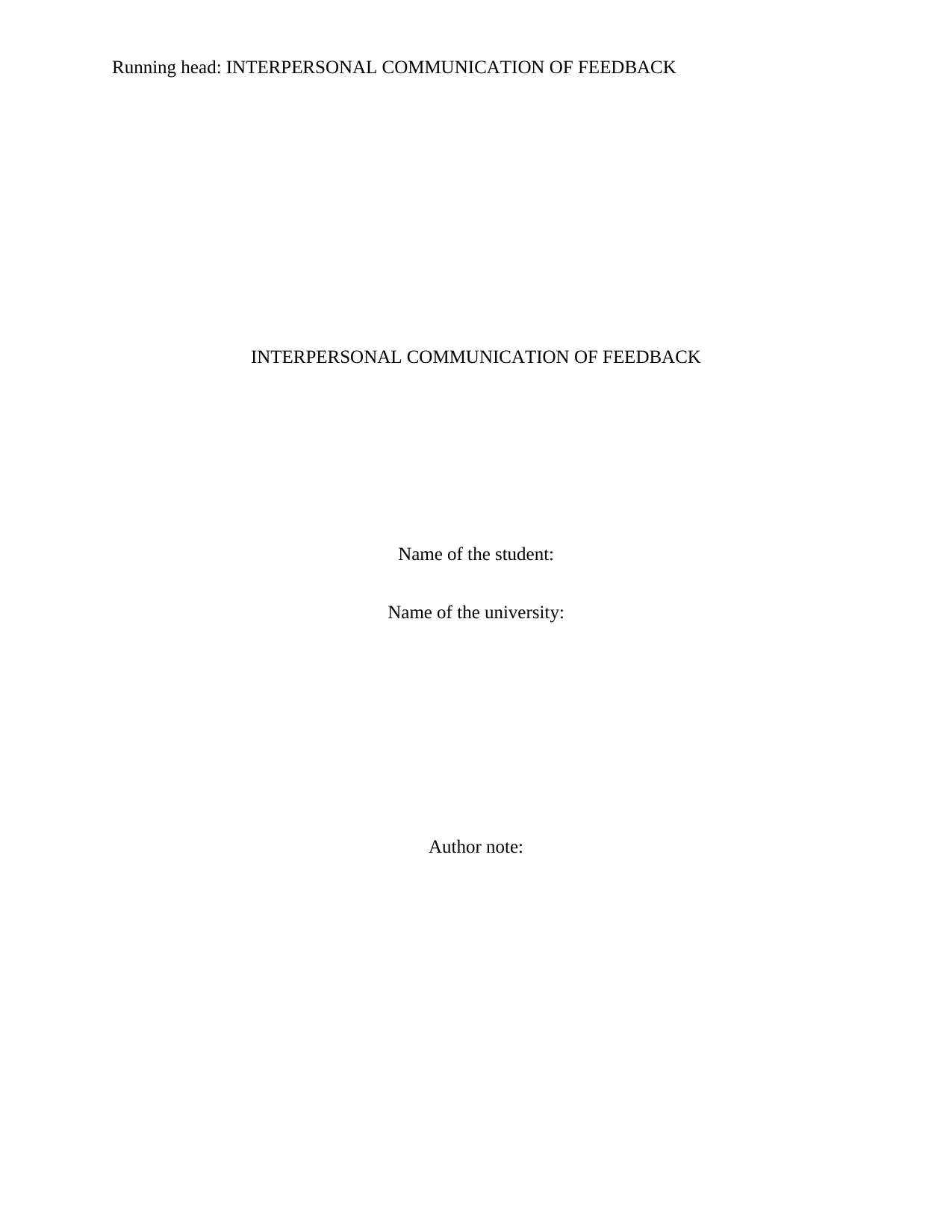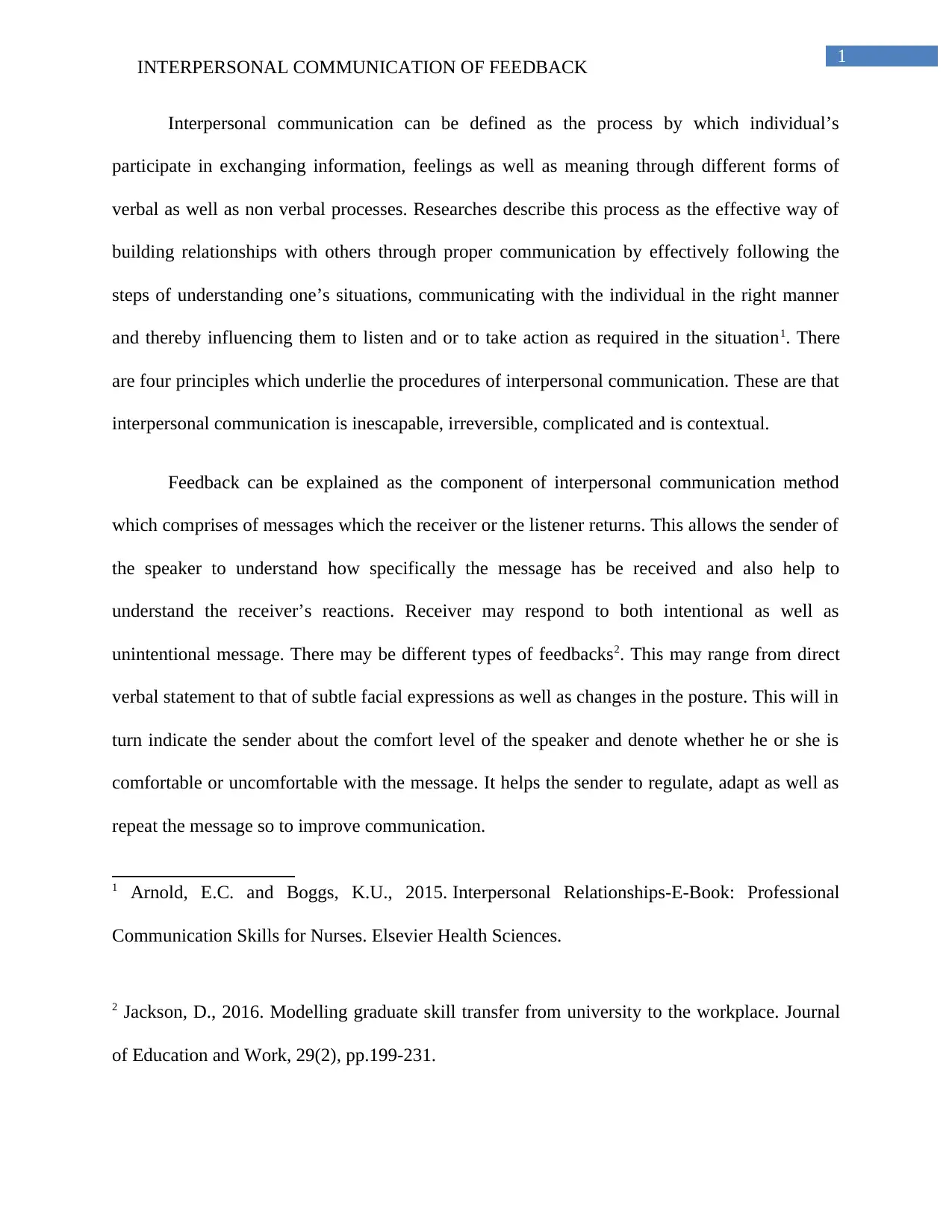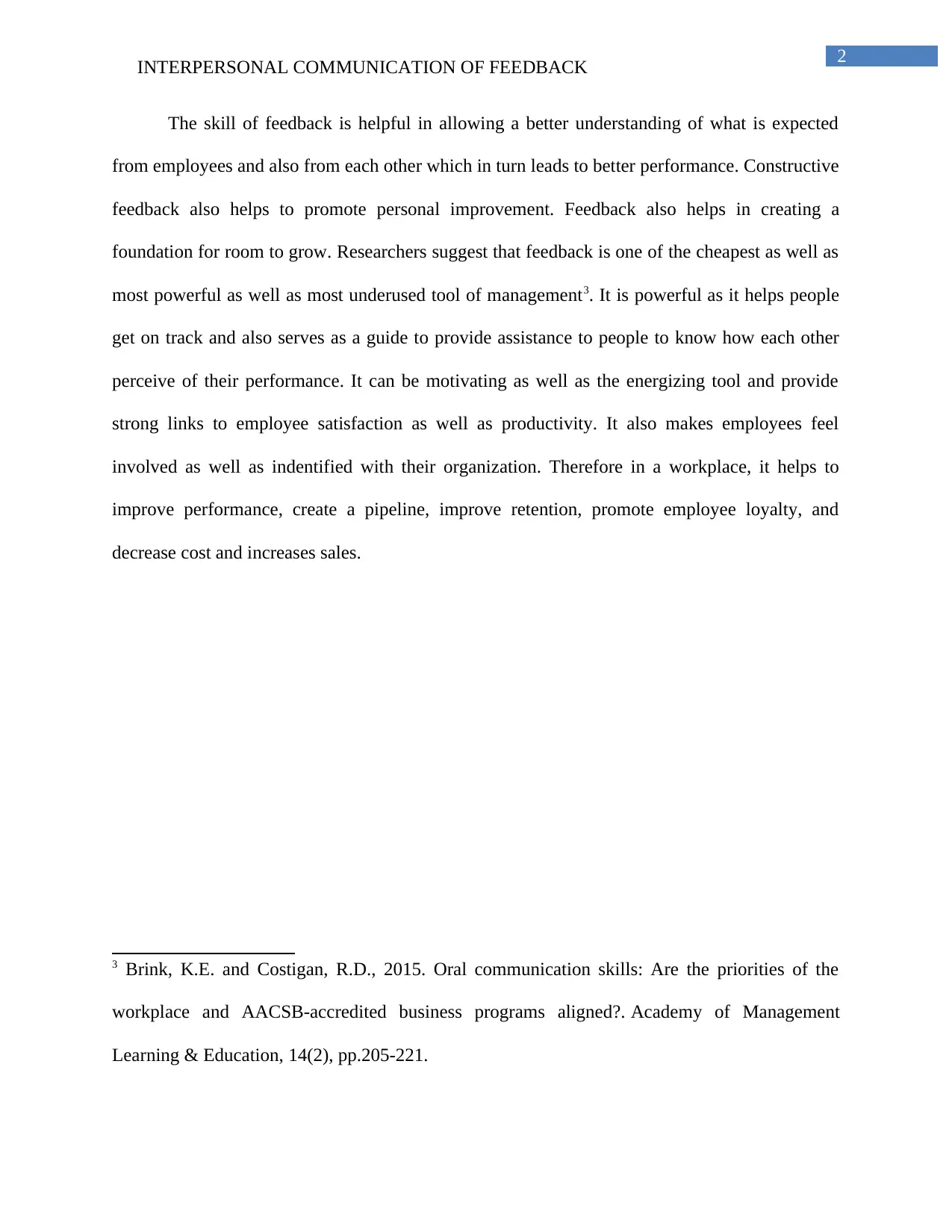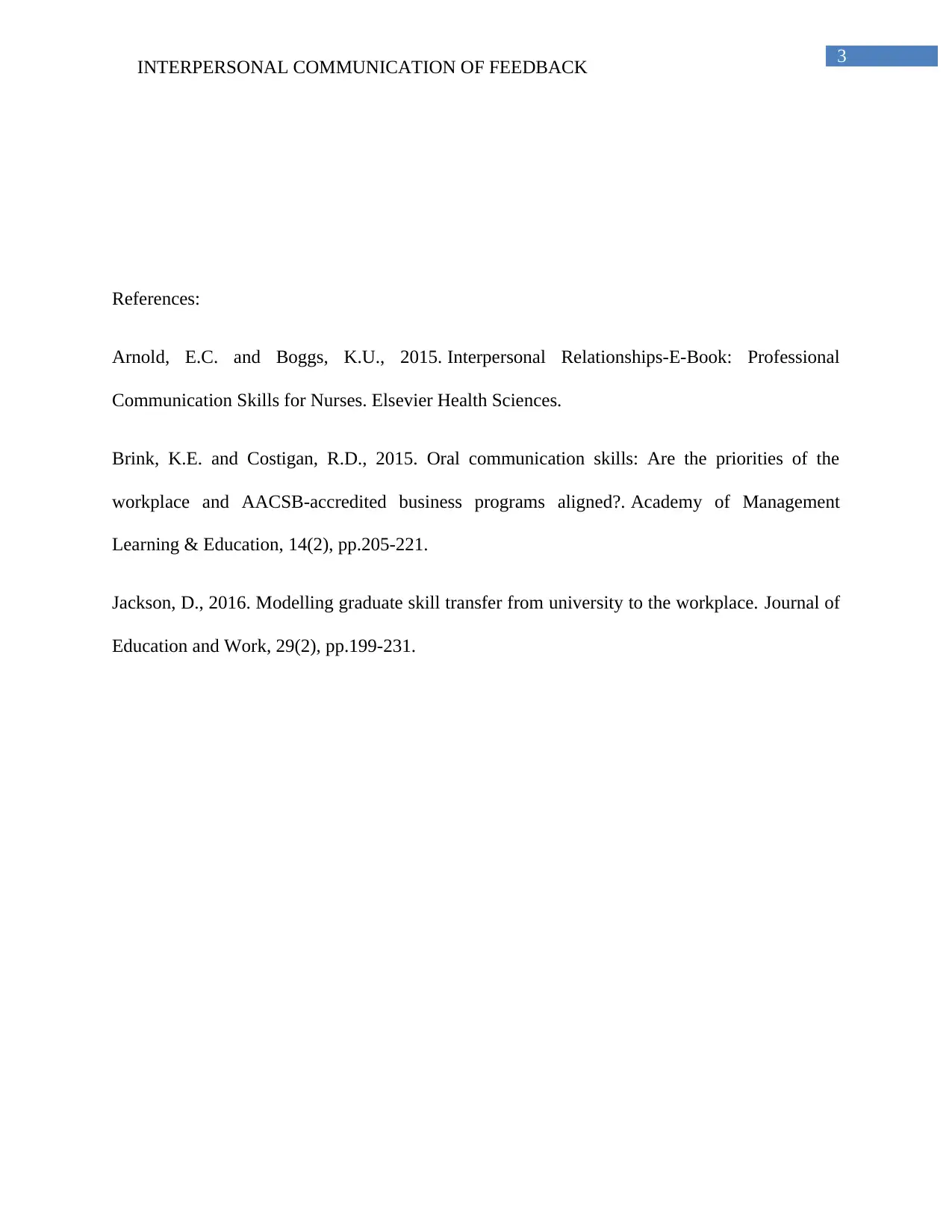University Report: Interpersonal Communication of Feedback Analysis
VerifiedAdded on 2020/03/23
|4
|549
|1351
Report
AI Summary
This report delves into the intricacies of interpersonal communication, focusing specifically on the role and impact of feedback within this process. It begins by defining interpersonal communication as the exchange of information, feelings, and meaning through verbal and non-verbal cues, emphasizing its importance in building relationships. The report highlights the four key principles underlying interpersonal communication: its inescapable, irreversible, complicated, and contextual nature. Feedback is presented as a critical component, representing the receiver's response, which helps the sender understand how the message is received and adjust communication accordingly. The report discusses various types of feedback, from direct statements to subtle expressions, and underscores its role in regulating and refining messages. Furthermore, it emphasizes the practical applications of feedback in the workplace, including its ability to clarify expectations, improve performance, promote personal growth, and foster employee satisfaction and loyalty. The report concludes by citing research that positions feedback as an invaluable, yet often underutilized, tool for effective management, highlighting its potential to enhance productivity, retention, and overall organizational success. References from various scholars are also included.
1 out of 4











![[object Object]](/_next/static/media/star-bottom.7253800d.svg)